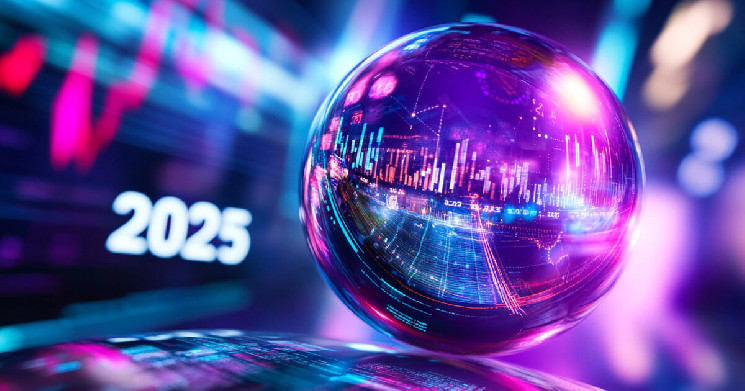2024 has been a pivotal year for DeFi. Practical applications for smart accounts are already in use. Major infrastructure milestones like chain abstraction, along with positive market sentiment and consistent growth, will enable a return to fundamentals in the coming year. This means products that bring real value to users that truly revolutionize the digital world. Here are some of the developments to expect in 2025:
1. At least 20% of Ethereum users will rely on EIP-7702-enabled smart accounts
In just the first quarter of 2024, private key compromises cost the industry over $239 million in losses. Smart accounts promise to unlock a safe, more customizable user experience, but widespread adoption requires a full overhaul of existing DeFi infrastructure. Following the launch of the ERC-4337 standard in March 2023, smart account adoption was relatively slow. While it has ramped up in 2024, smart accounts are by no means ubiquitous.
Ethereum’s upcoming Pectra upgrade, scheduled for 2025, includes EIP-7702, a new standard that will allow Externally Owned Accounts (EOAs) to execute smart contract code directly from their addresses, giving EOAs some of the functionality of smart accounts. With this standard, the private key retains full control over the account, posing a security risk and limiting account recovery. Still, EIP-7702 will play a vital role in the transitionary period as the industry continues to build smart account infrastructure.
User demand for greater accessibility, security, and efficiency will drive adoption, which is why we’re anticipating at least 20% of Ethereum users will have moved to EIP-7702-enabled smart accounts in 2025.
2. Half of all DeFi users will navigate multiple blockchains from a single unified interface
If we are going to see mainstream adoption in the next five years, we need to abstract blockchain technology from user experience. Smart accounts are the ideal foundation for chain abstraction. Due to their programmable nature, smart accounts can embed chain abstraction directly into users’ accounts, freeing them from infrastructure overload.
Safe is actively working on a solution to this. With Safenet, which will launch this year. We envision an account where users can view all your assets, no matter what chain they originate from, all at once, completing multichain transactions easily. Already, Safe accounts are a pillar of DeFi, storing ~7.6% of all USDC, 9.4% of cypherpunks, and more than ~$100 billion in digital assets.
Safe accounts support applications like Fileverse, a decentralized competitor to GSuite, oSnap, a tool for onchain governance, and Bulla Banker, a bankless Web3 protocol for invoices and payments made in crypto. Bringing chain abstraction to smart accounts – simplifying DeFi at the point of entry – will unlock serious potential for the decentralized economy.
3. AI-driven agents will execute at least 20% of all on-chain DeFi trading volume
2025 will be the year the integration of AI agents and smart accounts takes off. Picture a relentless, intelligent entity working around the clock to manage your crypto portfolio. Now imagine smart accounts enhancing AI agents, enabling users to set budgetary guardrails and incorporate safety measures like recovery accounts. The revolution is already afoot – over half of all monthly Safe transactions are on Gnosis Chain by Olas, a decentralized network driven by autonomous agents.
The integration of AI agents and smart accounts will go beyond autonomous trading. Web3 gaming will be transformed, with agents performing tasks like resource gathering, crafting, and combat, providing players with more engaging, dynamic, and personalized experiences. In prediction markets, AI agents will analyze large swaths of data, significantly reducing the barrier to entry for the average user. In 2025, smart accounts will magnify the work of autonomous agents, reshaping DeFi and pushing the decentralized economy to the world.
4. Three major global financial institutions will integrate stablecoin-based cross-border settlements
Global TradFi institutions are scrambling to play catch up. In Q2 of 2024, Visa handled $3.9 trillion in transactions, barely half the $8.5 trillion in transaction volume across 1.1 billion transactions for stablecoins during the same period. Stablecoin usage for cross-border payments and remittances is rapidly becoming the first choice for users seeking cheaper options for sending money.
All of this to say: global financial institutions will get on board. With a killer use case in remittances and payments, as well as a promising regulatory environment in 2025, we are going to see true integration into the traditional financial system.
5. 10% of overall DeFi liquidity will flow seamlessly across three or more ecosystems via zero-knowledge-based interoperability
Cross-chain interoperability requires the fluid transfer of data and communication. Zero Knowledge Proofs (ZKPs) tackle two issues at the core of interoperability: privacy and security. Either through ZK-native protocols or integrations, ZK can break down information siloes, enabling users and protocols to exchange data and verify transactions in a privacy-maximized way.
Chainlink, which formed a strategic partnership with Safe last year, is currently exploring a zero-knowledge proof-based solution DECO with the goal of improving privacy and security for users, protocols, and institutions seeking to leverage oracles. With a number of projects shifting to ZK interoperability tools, we can expect to see a significant impact on the industry towards the end of 2025.
Looking Ahead
Five years into Safe’s journey, we are thrilled to be part of the movement to unlock digital ownership and everything that comes with it. Next year, chain abstraction will enable us to overcome the technical challenges of blockchain while still benefiting from decentralization.
Advancements in autonomous AI agents, paired with smart account infrastructure, will break down barriers to trading and unlock new opportunities to build wealth. Guided by a mission to deliver real products and value to users, the industry will see unprecedented levels of onchain activity. The future is bright.


